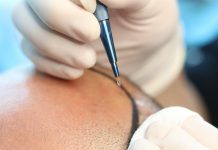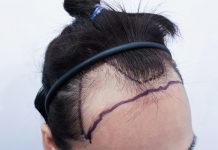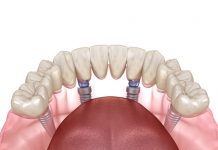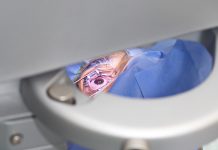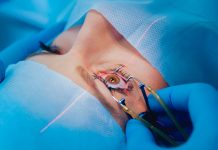Excimer Laser
Excimer Laser Eye Treatment, its average cost, types, Excimer Laser eye correction methods and all you should know about refractive errors are explained.
Excimer Laser Treatment is actually a type of eye surgery that is performed in order to correct the outer shape of cornea with the help of emitting deep ultraviolet lights. The cost might exhibit alterations depending on your country, your region and the surgeon you are currently working with.
When we think about health, we do not only consider our inner organs like the heart, the lungs or our blood values. We should also consider our sensing organs like our skin, our ears or our eyes. Eyes, especially, have one of the most important seats when it comes to the health of our sensing organs and to analysing the world around us. Without our eyes or without our ability to see in a clear way, we would encounter many challenges some of which could really be annoying. In addition to its negative effects on our ability to see, poor vision can also result in recurring migraines or headaches.
Left untreated, this situation might worsen one’s problems on focusing or it can even leave them with the thoughts of being unproductive and lazy whereas it is actually their eyes that are poorly functioning. Finding out the fact that you have poor eye vision might be of a challenge for you. It is usually quite hard to detect those problems on your own. If you are lucky enough, you can find out that you have a vision problem by comparing your sight with one of your friends or with one of your family members. Yet, it is always best to go and consult to an eye health specialist on a regular basis to find out whether you suffer from poor eye vision or not.
On the other hand, poor eyesight can come in all shapes and sizes. You might be suffering from myopia, hyperopia, astigmatism or some of them at the same time. At this point, excimer laser treatment comes to aid. In case you haven’t seen a doctor yet, here are some of those eye conditions mentioned above. With the help of those explanations, you can get a deeper insight regarding your vision:
- Myopia: This condition is also known by the names of “short sightedness” or “near sightedness”. It might be caused by a retina that is longer than normal or by some conditions that prevent the light from being focused on the retina. In short, myopia sufferers have eyes that cannot handle their own focusing power. This means that, for people who have myopia, nearby objects appear very sharply, clear and in focus yet the background or the other objects that are distant appear out of focus and blurry. This is actually somehow similar to the bokeh effect on cameras.
- Hyperopia: As opposed to myopia, this condition is also known as “long sightedness” or “far sightedness”. Unlike myopia, in this condition, the eyes’ ability to focus proves too short for its own focusing power. People are extremely likely to see both the distant and nearby objects as blurry. In some cases of low degree hyperopia patients are able to see distant objects clearly than those that are nearby and they tend to see nearby objects as blurry. That is where the name “long sightedness” comes from.
- Astigmatism: This condition can be associated with long or short sight or both of them. Eyes with astigmatism cannot focus equally on the objects. That stems from the fact that the cornea is curvier than usual or improperly shaped. The shape of the cornea is similar to rugby ball rather than a perfect sphere. Therefore, the light rays that come through cornea break in a different way and causes people to see blurry or like out-of-focus. Astigmatism’s effect on the sight is usually likened to watching a 3D movie without special 3D glasses.
- Presbyopia: This condition can be observed in anyone with increasing age. It generally begins around one’s 40th years of age. Eyes gradually start to lose their ability to focus on nearby objects and this makes it harder to read without spectacles. Some low degree myopia sufferers might be able to read without their myopia glasses yet this will make their vision blurry to some extent, hence uncorrected and annoying.
Doctors use “Dioptres” in order to measure the size of the refractive errors. It is shown in “D” and the number is expressed by being prefixed by a (+) sign for hyperopia, a (-) sign for myopia. Astigmatism can either be expressed with (+) or (_) sign. The final expression emerges as +4.50D or -6.00D, for instance. For refractive laser surgeries, people should have the affording dioptres in their eyes.
General Features of Excimer Laser
The word “Excimer” is actually an abbreviation. It stands for excited dimer. Excimer lasers have been used in the eye industry since the 1970s. From that time on, the excimer laser technique has been exposed to many experimental and clinical investigations. Those investigations and experiments have also given birth to techniques such as Photorefractive Keratectomy (PRK), excimer laser in situ keratomileusis (LASIK), Photo-astigmatic refractive keratectomy (PARK) or Hyperopic photorefractive keratectomy (H-PRK).
Excimer lasers give out deep ultraviolet lights that are considered as radiation. Those light waves are expected to be absorbed by the surface of your cornea and they are to remove a really little microscopic portion of the cornea tissue that is on the front. Therefore, the excimer laser alters the shape of the cornea and helps your eye to be able to focus light on a single point. This is especially helpful and effective in the cases of astigmatism. This laser type is in a powerful rivalry with solid-state lasers; however, excimer lasers are still offering the best access to the ultraviolet spectral region. Its energy is much higher as well as its peak point and average powers in pulsed operation.
It has been acknowledged as a reliable and safe method among medical communities. Millions of people have had excimer laser surgeries since 1980s and they have got rid of their glasses or contact lenses. Therefore, they have also been liberated from the social obstacles and limitations of wearing them. It is estimated that more than 31.4 million people have been successfully treated with these methods since they were in use by the doctors. The rate of success, also, is ultimately high with a rate of 98% if applied to suitable patients under proper conditions.
Excimer laser techniques aim to correct refractive errors. They are considered as “gas lasers” and they are capable of generating radiation in the ultraviolet range. A typical excimer laser consists of 2-9% of a noble gas, 0.2% of the halogen gas and 90-98% of a buffer gas. The buffer gas here functions as a means to transmit energy. This gassy mixture is kept in the pressure vessel. It is exposed to a pressure of nearly 3500-5000 millibars. Here, the gassy mixture is also excited with fast electrical discharges and each of those last shorter than tens of nanoseconds.
Excimer Laser Photorefractive Surgical Methods
Surgeons and patients have been looking for ways to correct the refractive issues of the eyes for a very long time. Nevertheless, microsurgical and more on-point techniques on refractive surgery have mostly been developed during the last 30 years with the introduction on lasers and they have become more popular than usual only during those last 10 years. The cornea as a part of the eye (the clear glassy window in front of your pupil and iris) is the most vital part of the focusing mechanism of our eyes and it is much easier to access than other eye parts. Hence, reaching and correcting the cornea is also safer than correcting the other parts of our eyes. And safety is one of the major requirements of any surgical procedure as well as effectiveness and expectedness. Here are the techniques during which doctors use excimer lasers:
1) Photorefractive keratectomy (PRK) with Excimer Laser:
During the application of this method, the laser beam is applied directly onto the surface of your cornea following the removal of your surface cells (epithelium) as layers. This excimer laser technique is one of the most preferred ones and it is generally used for treating myopia.
2) Photo-astigmatic refractive keratectomy (PARK) with Excimer Laser:
This method is nearly the same as PRK. The only difference here is the alteration of the tissue pattern that is removed and changed in order to correct astigmatism as well as myopia.
3) Hyperopic photorefractive keratectomy (H-PRK) with Excimer Laser:
This method is used for treating hyperopia and it has mutual aspects with PRK and PARK. It is one of the most popular forms of excimer laser techniques that are based on surface. However, there are not many research conducted on the long term effects of this method. Therefore, it means that the method should be considered as investigational. It is suitable and applicable only to very low degrees of hyperopia. PRK, PARK and H-PRK usually work best for low to moderate myopia and astigmatism. The best results can be seen when they are applied to myopia less than -6.00D. Nevertheless, treatment for up to -10.00D is possible, as well. The higher the correction rate, the less successful are the results.
4) Laser in situ keratomileusis (LASIK) with Excimer Laser:
During the application of this method, which is also referred to as “flap and zap”, a thin surface flap on the cornea is created as the first thing. This flap is later softly moved aside before the application of excimer laser. After this, the deeper layers of cornea are exposed to excimer laser. Lastly, the corneal flap is relocated. From 1991 on, a limited number of studies on the long term effects of this method have been published. LASIK is usually preferred for myopia greater than -8.00D. The best results have been observed with myopia less than -15.00D; however, the treatment up to -20.00D is also technically possible. In general, laser surgeries are less invasive methods during which the epithelial cells are disturbed as less as possible. Those epithelial cells form a protective layer during the healing process of the cornea.
5) iLASIK:
Being a variant of LASIK, iLASIK procedure is also known as “Blade-Free LASIK”. Patients can expect the popular benefits and outcomes of LASIK as well as improved quality and accuracy. During iLASIK operations, the corneal flap is created by using the femtosecond laser. By doing so, the excimer laser is expected to reshape the tissue under cornea. It is slightly faster and less invasive than the traditional LASIK method. Your doctor can help you choose what is best for you.
6 ) Intralase:
This technique is used merely for creating the flap during a LASIK surgery. Some claim that this is by far the safest method for creating the corneal flap. With Intralase method, tiny pulses of laser pass through the other side of cornea in a quadrillionth of a second.
7) LASEK:
Being performed all over the world thanks to the invention of excimer laser, LASEK, also known as Laser epithelial keratomileusis, is different from LASIK in the way that the corneal surface is flapped. Patients report longer recovery period after LASEK but they have a lesser chance of experiencing post-operational complications.
8) PTK:
Also known as Photo-Therapeutic Keratectomy laser surgery, PTK is usually performed for treating corneal injuries or diseases that are associated with corneal scars and corneal surface anomalies. It does not include vision correction but it is performed for therapeutic purposes. During PTK, the corneal tissue is removed first with an alcohol solution and then with the excimer laser.
How to Understand that You Need Excimer Laser Treatment
If you are suffering from low to moderate degrees of myopia, hyperopia or astigmatism, this treatment plan can prove as effective as possible for you. If you are also seeking ways to ditch your glasses or contact lenses out in a permanent sense, then you should obviously consider being treated with excimer laser eye treatment options. Nevertheless, expecting the correction of presbyopia from these treatments will not really work. It is because this is an age related condition and requires other options regarding correction.
Taking the right steps: Once you decide on ditching your glasses or contact lenses away for an eternity, you also have to take some steps on this path. Merely wanting change and waiting for it to happen as quickly as possible will not work. You cannot expect to change any situation in such a manner. But you know what to do now thanks to our guide below:
How to Find a Clinic
As your first move, you should try to find a clinic that is capable of meeting with your expectations and requirements. You should be careful about licences, certificates and the educations of the staff there. Some clinics may put advertisements in the Internet and they can be shown in the first rows of your search list. However, this does not mean that they have experienced and professional doctors. They can even be tricksters and you should be extremely careful. You can try searching for their previous patients or reading the comments about them. By doing so, you can get clearer insights regarding your choice of a clinic. You should also consider your surgeon’s experience in the related areas of treatments. The more experienced your doctor, the more successful are the results.
Initial Examination Appointment
After you decide on a certain clinic, you are expected to book an appointment in order to initiate the treatment process. Your surgeon might demand your vision history, the current state of your ability to see and they will most likely check your vision, as well. You are expected to know what you exactly want. You most probably want to get rid of your glasses, your contact lenses and to correct your vision in the long term if you decided to have this procedure. Your surgeon will conduct a full ophthalmic examination and assessment. During those steps, they are most probably going to use eye drops to dilate the pupils.
Your general medical history and your overall health will also be taken into consideration in the frame of refractive surgery and possible expectations on your outcome. You and your surgeon will determine which type of refractive surgery is the most appropriate for you and then you will move on to the actual treatment phase. Your surgeon will also talk about possible risks and complications although these are really minor likelihoods. You had better have your previous glass or contact lens prescriptions with you during your first appointment for refractive laser surgeries.
Refractive Surgeries and What You Can Expect During Conduction
You and your surgeon will decide on the surgery in accordance with your needs and your overall status. However, you should pay attention to some pre-operative details:
- Before the surgery, you are recommended to stop wearing contact lenses. You should stop using them at least 2 or 3 weeks before the surgery, even before your first appointment, if possible. That is due to the fact that they might change or disrupt the shape of your cornea. You can try wearing your spectacles instead, at least for a month. After that period, you will most likely never need neither of them.
- If your eyes are dry or infected, they should be treated as the first thing. After this, your surgeon can easily and safely treat you.
- In order to avoid infections and any kinds of irritations, it is also recommended that you do not wear any make up, eye-creams or any kinds of perfume. You might not be able to notice the irritations they cause.
- Your eyes and your face should be as clean and hygienic as possible for the best results.
- In addition to these recommendations, you are expected to listen carefully to your surgeon and follow their advices and directives strictly. If you stick to their advices and apply what they tell you to do, your results will emerge without any problems like various complications or infections, or unexpected side effects.
Surface Based Photorefractive Surgical Techniques: PRK, PARK and H-PRK
These excimer laser procedures are all conducted in similar manners. The only major difference between those techniques is the pattern created on the cornea. This pattern is created in accordance with your problem. Myopic (PRK), Astigmatism (PARK) and Hyperopia (H-PRK) patterns are all different from each other.
Before all of those procedures, you do not have to take general sedatives or general anaesthetic drugs. The only sedated part is the eye. They will be anaesthetised with a few drops of topical anaesthetics. It is expected to show its effect in 10 minutes. After the anaesthetic starts showing its effects, you will be taken into the laser area and you will most possibly be asked to lie down on a couch located under the laser. In order to prevent you from blinking or closing your eyes during the surgery, your eyelids will be fixed with a small apparatus called speculum. It will be placed right between your eyelids.
The laser has to take off tissue from the surface of your corneal stoma. It lies exactly under a thin layer of epithelium, also known as “the surface cells”, as already mentioned before. This layer, too, can also be removed with the help of excimer lasers rather than sharp instruments. It is reported that doctors have started using the excimer laser to apply this step, as well. The removal takes between 60 and 120 seconds. Once this surface tissue is removed, you will be asked to concentrate on a specific target while the PRK procedure continues and the excimer laser takes off your corneal tissue in a pre-determined pattern.
You can feel a faint tapping on your eyes and notice a smell of singed hair. Nevertheless, this smell can be extremely confusing since the laser does not have any thermal properties and it does not actually burn any tissue. It is solely due to the carbon molecules liberated from the corneal surface after the laser exposure. The laser part will take between 15 and 90 seconds. This time frame depends on the type of the laser and the type of the refractive issue that is being treated. After the treatment, your surgeon will apply topical drops and ointments on your cornea. There will probably a pad placed on your eye for 6-24 hours, as well.
Lamellar Excimer Laser Procedures (LASIK)
Those procedures are totally different from the surface-based procedures. The preparation part is similar to the ones mentioned before, the only anaesthetic needed is for the eyes and it will be a few drops of topical sedatives. However, LASIK is more comprehensive than PRK and the other ones so the skin around the eyes will also be cleaned with anti-septic solutions and sterile drapes will be placed over your forehead and eyes. During this procedure, the corneal surface cells (epithelia) are not removed. Instead, a hinged flap is created on the cornea and it is moved to another side in order to apply the treatment into deeper parts of the cornea. The excimer laser part might take between 30 and 120 seconds depending on your condition. Just like PRK, PARK and H-PRK, topical ointments are applied after the surgery and your eye is protected with a pad or a shield.
The Post-Operative Period
The period after the surgery is vitally important as it is in the case of every surgery, regardless of their types. The post-operative period has determining effects on your healing process as well as your overall results; therefore, your general satisfaction. Here is what you can expect from your excimer laser eye treatment in the post-operative period:
Post-Operative period after PRK and PARK
Your eye is going to bear a large epithelial defect. It can be evaluated as a big scratch in a more basic sense. The procedure is a painless and a comfortable one; however, your surgeon will prescribe you some medications for the effects of your surgery afterwards. Those prescriptions will usually consist of topical eye drops, ointments and pain killers. They are expected to relieve the pain caused by the epithelial scar. During the first 24 hours, a pad will be placed on your operated eye.
The First Hours:
Speaking of the post-operative pain and its score regarding the disturbance, the patients start feeling the pain after the first two to four hours and reached its peak in the first 12-16 hours. By 24 hours, it is improved considerably. Eye drops and oral pain killers are capable of relieving post-operative aches to mild or moderate and it makes the process more bearable. Nonetheless, nearly one in ten of the patients find the pain to be extreme.
The First Days:
On the second day though, the pain is mostly soothed; yet, your eye might feel a little bit ragged and gritty. Additionally, you might find out that it is sensitive to light and a little uncomfortable for the duration of 3-4 days. Once your epithelial cells are completely healed, this uncomfortable sensation will go away as well as the blurry vision caused by the epithelial defect. If you have gone through PRK or PARK procedures, you should take at least 2-4 days off from work. Moreover, you may not be capable of driving for 4-7 days.
The First Week:
After a week following the surgery, your surgeon might prescribe topical antibiotics to be applied as drops four times a day in order to prevent or eradicate possible infections. You might be asked to make a follow-up booking at the clinic after the first 3 days following the procedure. During those follow-ups, your doctor might also make you use topical steroid drops in order to perfect the treatment. It should last for 2-12 weeks at maximum. Steroid eye drops are not recommended for longer use.
Post-Operative Period After LASIK
Both PRK and LASIK methods use excimer lasers to correct the refractive frame. Since there is no epithelial defect caused by LASIK (unlike PRK, PARK or H-PRK), it is a more painless and comfortable procedure compared to its other alternatives. Patients report minor discomfort only between the 6th and 12th hours after the surgery. Your surgeon may make you use topical antibiotics or steroid drops for a few times a day during your first week following the operation.
Your vision, on the other hand, will start to improve after 12 hours. You will be able to go back to work after 2-4 days. As mentioned before, you might be asked to book follow-up appointments in order to be reviewed by your surgeon after the surgery. Although there is generally no pad applied to the eye, you should be very cautious. You must pay special attention to not rubbing your eyes. Your doctor might recommend you to wear a clear shield in order to diminish the risk of rubbing eyes in your sleep.
What to Expect Following the First Few Months After Excimer Laser Refractive Surgery
During your healing process, you may experience blurred vision for the first days and even for the first weeks. This is related to a temporary over-correction after which your “normal” sight will develop on its own. The degree of this over-correction might alter from laser to laser. And there is also stabilisation of the refraction. It might take up to a few weeks or several months. The length of this period depends on three major things:
- The magnitude of the correction: Higher correction needs more time to be fully stabilised
- Whether it is PRK or LASIK that has been performed: LASIK has been proved to have shorter stabilisation periods than PRK
- Personal healing characteristics: You should pay attention to your doctor’s advices and recommendations. Some patients’ vision will be stabilised after only a few weeks. Most of the patients require three to six months to be fully stabilised. A minority of those, however, might require 12 months or more to fully stabilise. This is usually observed in those with higher correction points.
Anisometropia During the Post-operative Period
Anisometropia is a difference between the focus of your two eyes. It usually results from the treatment of one eye. The effects can be lowered to minimum by using contact lens in the intact, un-operated eye. If you are unable to wear contact lens in the other eye and you have myopia greater than -4.00D, then this condition might make you unable to perceive the depth of a field and leave you incapable of driving. This period of imbalance should be taken into consideration by those who suffer from moderate or severe myopia until the other eye is also treated.
Complications of Surface Based PRK, PARK, H-PRK and LASIK with Possible Short Term Side Effects
- Pain: The treatment with laser itself is indeed painless and comfortable; yet, most of the patients start feeling eye mild to moderately severe eye pain after the first two or three hours . This usually lasts for 24 to 36 hours in general as mentioned before.
In LASIK, however, there is almost no pain felt afterwards because there is no epithelial tissue being scarred.
- Corneal haze: All of the patients develop a mild corneal haze in the central part of their eyes after the laser treatment. This might reduce one’s sight and cause the appearance of halos around objects. The haze reaches its peak during the first 2-3 months and gradually disappears after 6 months. For LASIK, the likelihood of a haze is greatly decreased. However, some patients might experience a mild haze in some eyes.
- Anisometropia: Only one eye is able to be treated at a time. And it means that patients have to wait for 2 to 6 months before having their second surgery. During this period, the untreated eye will be different in sight than the treated eye. This will cause an imbalance in your sight. It can be eliminated with the use of contact lenses.
- Minor over-correction or under-correction regarding myopia: Some patients might be a little over-corrected or under-corrected. They might require glasses or contact lenses to obtain their best visions, again. That is generally applicable to the patients who need greater and higher correction points. However, 90% of the lower level myopia cases do not need their glasses or contact lenses again. This factor depends upon the healing characteristics of the patient.
- Regression in the PRK correction: Some patients can once more become short-sighted or astigmatic after excimer laser correction. This happens gradually and with time. Nevertheless, with new types of excimer lasers using 6.0mm diameters, this condition only affects less than 10% of the patients with low or moderate myopia.
- Infection: There is a small risk of infection. It is the case for any surgical procedures.
- Vision Threatening Complications: Nearly all of the complications listed below are characteristics of abnormal cornea healings with haze or irregular surface developments. For patients with low to moderate myopia, the risk of these complications occurring is 1-3%.
-
- Severe haze and extreme scarring: Usually, this causes your best vision, which is obtained via glasses and contact lenses, to be reduced mildly or severely.
-
- Persistent epithelial defects: In this very rare case, the surface cells on the cornea do not correctly answer the treatment with laser. It might cause pain and watering in the eye with the risk of further reduction in vision.
- Infection: This has only been observed a very few times all over the world. If any infection occurs, it is usually during the first week following the post-operative period. Severe or prolonged infection may result in permanent scars on your cornea and heart breaking, reduced vision.
What Is Excimer Laser Surgery Exactly?
Actually, excimer laser is the type of the laser that is being used during some of the refractive correction surgeries. This laser consists of several types of gases and compressed with pressure, to be excited by electrical waves later. There are several procedures that are being conducted with the use of this laser. Photorefractive keratectomy (PRK), photo astigmatic refractive keratectomy (PARK), hyperopic photorefractive keratectomy (H-PRK) and laser in situ keratomieusis (LASIK) are all examples. So, there is not a single excimer laser surgery. Yet, there are several optical surgeries during which the excimer laser is being utilised.
Who Can Have Refractive Laser Surgeries?
-
- People over 18 and those who use glasses or contact lenses.
- Those patients whose dioptres have not shown any alterations more than 0.50D in the last one year.
- Those who suffer from up to -10D myopia.
- Astigmatic people who have up to -6D of astigmatism or people who have up to +4D hyperopia.
- People with adequate cornea thickness.
- Those who are not suffering from additional eye diseases.
- People whose eye structure is proper for such a surgery.
They Say You Go Blind in 10 Years After Laser Treatment. Is That True?
Laser technology has been in use for more than 30 years. It has been used since 1980’s. There is no risk of going blind; otherwise, it would have been reported during this period.
Are Other Excimer Laser Eye Surgeries Like Cataract Possible After Laser Treatments?
Laser surgery will not prevent any future eye treatment. It only aims to treat the cornea and specific issues related to your vision.
Is My Retinal Layer Scarred During the Excimer Laser Surgery?
No. Laser treatment only aims to correct and treat your corneal functions, hence your corneal layer. The retina cannot be damaged, then.
Will Laser Make Me Go Colour Blind?
It is impossible to go colour blind after laser treatments.
Will I bleed?
The laser treatment is applied on your cornea and the cornea has no veins in its structure. Due to cornea’s own structure, there will be no bleeding.
Will I Have To Use Those Eye Drops for a Life Time?
No. You are required to use the eye drops for the first few months after the treatment. Life time use of drops will never be necessary.
What Can Excimer Laser Surgery Change in My Life?
You will no longer feel disturbed by your glasses or contact lenses. They will be gone forever and ever. You will be able to see what time it is easily in the morning or at night. Moreover, your appearance will become more natural as well as your sight without any assistive devices. You are going to be more confident and comfortable during exercise or sports activities. You are also going to be less affected by weather incidents like severe wind or rain. Most importantly, you will never have to worry about your misplaced contact lenses or about breaking your glasses accidentally.
How Long Does the Excimer Laser Treatment Take?
Laser treatments are usually done within minutes! You can benefit from all the future advantages of laser treatments in a maximum of 10 minutes.
What Should I Be Careful About at the Hospital or the Clinic?
The place you are having the laser treatment should have strong technological and hygienic infrastructures. The experience and the expertise of your surgeon matter greatly in laser. You should be very careful on this issue. You should be able to reach the entire technological infrastructure for laser treatments and tests. All of the medical supplies should be of the highest quality and they must be used only once. You should also search if they offer treatments and solutions in the all eye-related areas.
Will I Be Able To Go Back to Work Immediately?
It is not usually possible to go back to work on the same day or the day after. You might need to take 2-4 days off from work. It is better to arrange for someone to drive you home afterwards. You will not be able to drive due to the patch on your eye.




